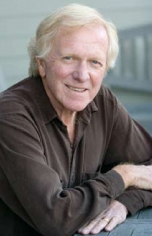Much has been written and said lately about Community Choice Aggregation, but I don’t think the message is getting across. Let’s see if I can explain it.
The state Legislature created Community Choice Aggregation (CCA) in 2002. It allows cities, counties or regions to decide what type of electrical power—fossil fuel or renewable—they want to use. Marin is exploring that option. If your city or the county (if you live in an unincorporated area) approves a CCA, Pacific Gas & Electric will still deliver the power, read the meters and send out the bills. What would be different are the sources of power.
Currently, PG&E provides electrical power to Marin from sources which include coal and natural gas burning power plants, hydroelectric dams in the Sierra, the Diablo Canyon Nuclear Power Plant, and several solar plants and wind farms. Marin’s electrical “load” is about 240 megawatts of electrical power, 12 percent of which comes from renewable, or green, sources such as solar, wind and geothermal. The state has mandated this be increased to 20 percent by 2013, but PG&E has indicated it cannot not meet that target.
In any event, that isn’t fast enough or good enough for Charles McGlashan, president of the County Board of Supervisors. “Marin could easily take 350,000 tons of greenhouse gases out of the atmosphere by increasing our percentage of renewable power sources starting in 2010,” he says.
For that to happen, though, at least some of Marin’s 11 cities and the county, which represents unincorporated communities such as Marin City, Point Reyes Station and Kentfield, must approve joining Marin Clean Energy, the name given to the county’s CCA.
Here’s how it works: If your local government rejects joining Marin Clean Energy, you’ll stay with PG&E—same sources, same rates, etc. However, if your governing body joins Marin Clean Energy, you’ll have three options:
1. You can opt out of any change, meaning you stay with PG&E and have its rates, which fluctuate depending on fossil fuel prices and other conditions.
2. Go Light Green, meaning the percentage of your renewable power sources will grow from 25 to 50 percent over five years—and your rates will remain about the same or possibly lower.
3. Go Dark Green, meaning your energy sources will be 100 percent renewable—solar, wind, biomass, geothermal—and your rates will probably go up 5 to 10 percent over the first five years, then level off or drop.
Hang in there, we’re almost finished.
Marin County is not alone in its desire to get greener. Berkeley, Beverly Hills, San Diego, San Francisco and Los Angeles Counties are also moving in that direction. One CCA, the San Joaquin Valley Power Authority, has already been formed. The motivation is not only to reduce greenhouse gas emissions but to stabilize or even reduce the cost of electricity.
“It’s also a huge upside for the local economy,” says McGlashan. “Of the 240 megawatts Marin consumes, as much as 40 percent could responsibly be generated locally and building that kind of an energy source will provide a lot of jobs.”
So what’s not to love about a Community Choice Aggregation, especially one named Marin Clean Energy? Two things: Should municipalities be in the competitive and complicated business of buying energy (remember Enron)? Moreover, are green, or renewable, energy sources less costly than those that produce greenhouse gases? “Right now, renewables cost considerably more and the energy business is a very intricate enterprise,” says Severin Borenstein, director of the University of California Energy Institute in Berkeley. “Given time this might change, but it’s many years away.”
Over the coming months, local cities and the county will be discussing Marin Clean Energy. If it can be shown that the costs of renewable energy are reasonably competitive with what we have now—and a solid and simple business plan is presented—there is no reason the program shouldn’t be approved. It would be especially meaningful if all 11 Marin cities and the county unanimously joined in this effort to reduce greenhouse gases. That’s my point of view. What’s yours?
E-mail [email protected].


